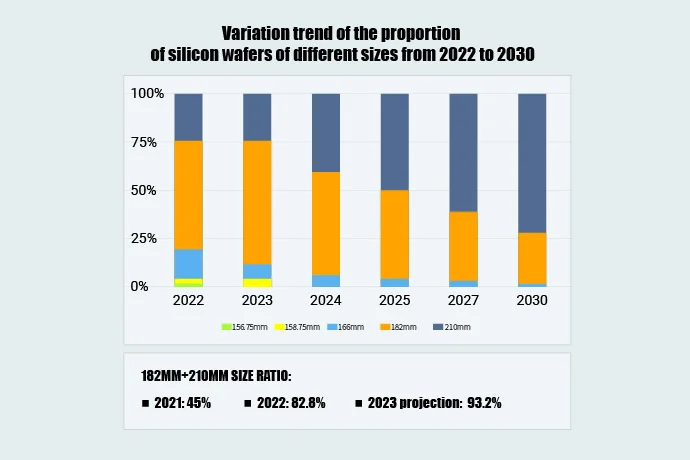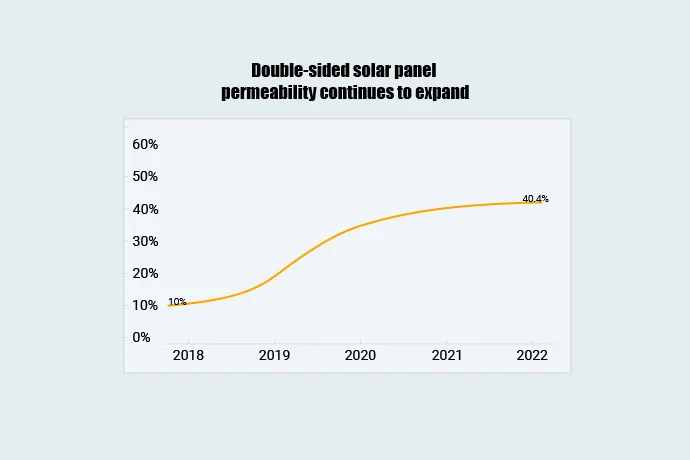Impact of 182mm and 210mm silicon wafers on inverters?
In 2022, the market share of 182mm and 210mm silicon wafers is expected to be 82.8%, and it is projected to reach 93.2% in 2023. The use of large-sized silicon wafer components can effectively increase the energy density per unit area of roofs in distributed power stations, which is an important way to reduce the cost of photovoltaic power stations and significantly reduce the balance of system (BOS) and levelized cost of electricity (LCOE). Therefore, the rapid application and development of high-power components is also a necessary path for the entire industry.

The popularity of large silicon wafers and double-sided modules also places higher demands on the current and power of inverters. If the input current or power of the inverter does not match the module, it will directly affect the profitability of the power station, and even bring a series of safety hazards such as shortening the service life of the inverter.
More and more modules are using large-sized silicon wafers of 182mm and 210mm, which means that the current of the modules is constantly increasing. The following figure shows the typical parameters of modules using 182mm and 210mm wafers. Generally, modules using 210mm wafers are generally at 500W or above. When the module power reaches or exceeds 530W, the operating current is basically above 17A. For modules using 182mm wafers, when the power reaches or exceeds 545W, the operating current is generally above 13A.
The proportion of double-sided modules reached 40.4% in 2022. With the power gain of double-sided modules, the corresponding current of 182mm and 210mm large-sized modules will also be further increased.

Considering the current fluctuations in actual application scenarios, such as in some areas with low temperatures and good sunlight, modules that work at a current of 13-14A under STC conditions can have a real working current of 15A or even higher. At this point, the demand for the current input capability of the inverter is also increased, generally requiring 1.25 times the operating current of the module under STC conditions. If the input current capability of the inverter cannot meet the requirements or is mismatched with the module, serious “clipping” phenomena will occur, which will affect the power generation of the system and directly cause loss of power station revenue.
The most direct impact of the popularization of large-sized silicon wafers is the increase in module power. For the inverter side, the whole machine power and the maximum power value matching the module also need to increase accordingly. When the inverter power is less than the input module power, oversizing occurs. Reasonable oversizing can increase the working time of the inverter at full load. However, if the over-sizing ratio is too large due to the limitation of the inverter input power, the inverter will be limited and the output power will be affected. Moreover, the long-term operation of the inverter at full load will also affect its service life and reliability, thereby increasing the maintenance and replacement costs of the inverter throughout the life cycle of the entire power plant.











